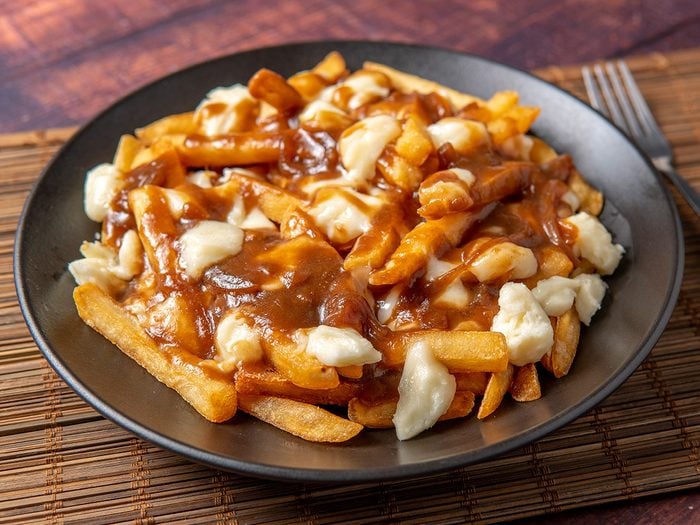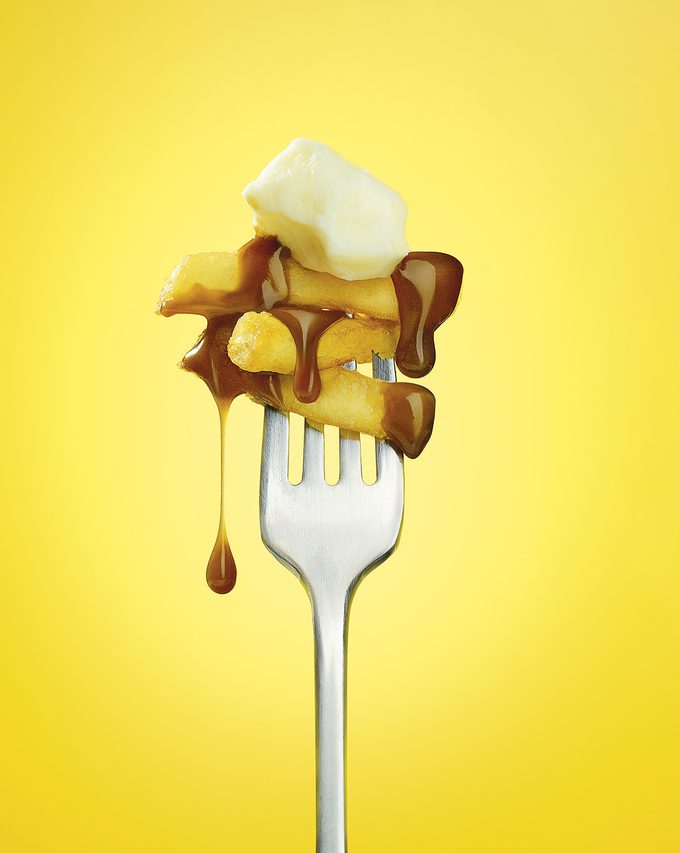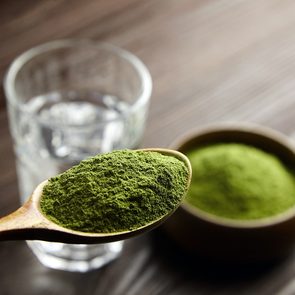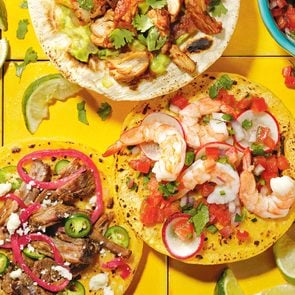Poutine Might Be the World’s Biggest New Comfort-Food Trend

Born in Quebec, poutine—fries topped with cheddar cheese curds and doused with beef gravy—is finding fans around the world.
Why? It’s a triple threat: Crispy fries. Curds with a squeaky-on-the-teeth quality. Gravy thin enough to seep down through the pile but thick enough to easily be sopped up by a forkful of fries and gravy-softened curds.
Read on to discover the history of poutine and why it has become the most popular Quebecois dish around the world.
The history of poutine
The word “poutine” likely comes from the Quebecois slang for a “mess.” Or it could have evolved from pouding (pudding).
Sylvain Charlebois, a food economist and the author of Poutine Nation, confirms that the earliest version of the dish appeared in 1957 in the Quebec dairy town of Warwick. A hungry customer named Eddy Lainesse asked restaurateur Fernand Lachance to put cheese curds and fries together in a brown paper bag because he was in a hurry. Lachance obliged and, as the tale goes, said, “Ça va faire une maudite poutine!”—“That’ll make a damn mess!”
The combination became a hit in casse-croûte (snack shacks) across the province. But then poutine boarded the gravy train in 1964 in the town of Drummondville. The young owner of Le Roy Jucep diner, Jean-Paul Roy—who just so happened to be a trained saucier—was the first to dare to douse the fries and curds with gravy.
Poutine is a symbol of pride in Quebec, but of course the rest of Canada has fully embraced the delicious mess. Most of the big fast-food chains—KFC, Wendy’s, McDonald’s, Harvey’s, A&W—have it on their menus. And Smoke’s Poutinerie, with dozens of locations, has more than 20 choices, including a “Philly cheesesteak” version with slices of flatiron steak, cheese sauce and red peppers.
Poutine around the world
Now, poutine is popping up on menus outside our borders. Google the city you’re in and you’re bound to find poutine spots. That includes in London, Paris, New York, Shanghai, Tokyo, Moscow (where it has been nicknamed “raspoutine”) and even posh Monaco.
Charlebois says he wrote Poutine Nation because “I had to find out why this unhealthy but delicious dish has become the most popular Canadian dish around the world.” As part of his research, Charlebois sampled poutine in dozens of cities—from a surprisingly good version in Brisbane, Australia, to a lacklustre plate in Cleveland, Ohio. “They served me a poutine with powdered mozzarella,” he says. “But I was polite about it.”
Charlebois compares the story of poutine to pizza’s glorious rise to fame: an unfussy combo of carbs, cheese and sauce, something unsophisticated but so tasty it became a global sensation.
Whether it’s ever going to be as universally popular as pizza is anyone’s guess. But, as Charlebois boldly declares, “It took 100 years for pizza to get there. And poutine will be around for a very long time.”
If you haven’t yet, give poutine a chance. You may just find that the unpretentious dish is so much more than the sum of its parts.
Now that you know the history of poutine, find out how the hamburger became the world’s favourite sandwich.







